#prince de conti
Text

François de Bourbon, Prince de Conti. Par Louis Boudan.
7 notes
·
View notes
Text
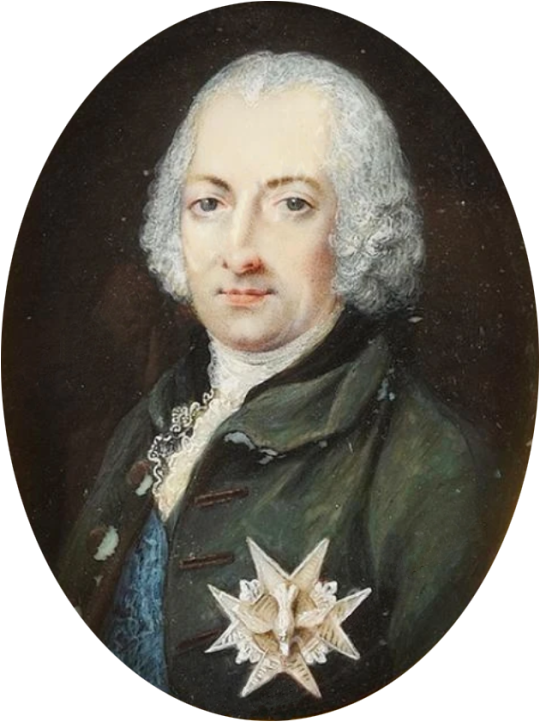
Louis-François I of Bourbon, Prince of Conti. Attributed to Jean-Baptiste Joseph le Tellier.
#Jean-Baptiste Joseph le Tellier#royaume de france#maison de bourbon#bourbon conti#Louis François I of Bourbon#prince de conti
3 notes
·
View notes
Text
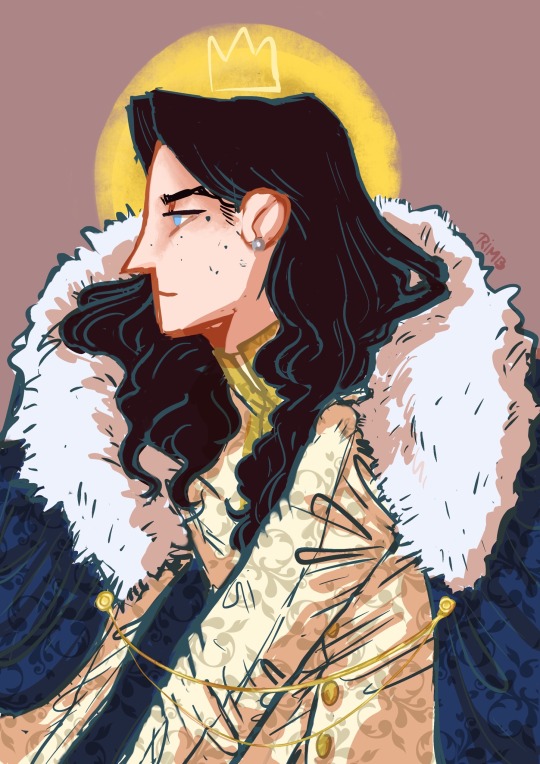
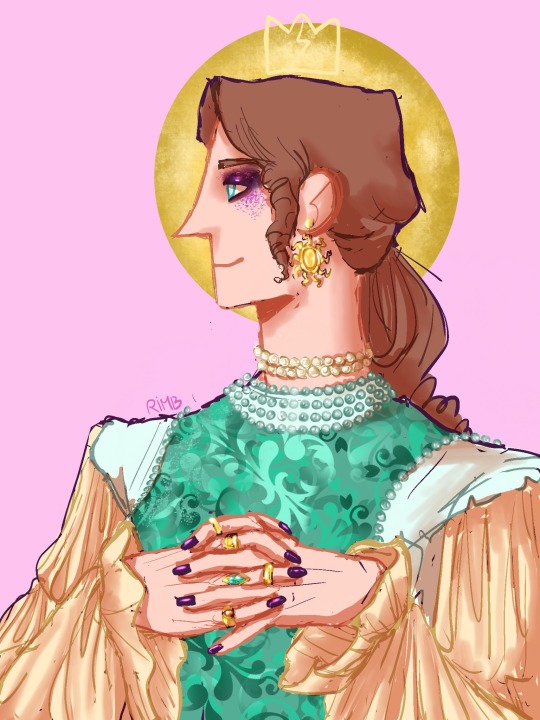

Louis XIV , Philippe de France , Prince de Conti
A bit of French historical figures for y’all
#roi soleil#Philippe de France#christophe mae#emmanuel moire#prince de Conti#louis xiv#comédie musicale#musical#french#french history#french kings
2 notes
·
View notes
Text
4 portuguese monarchs who might had same-sex relationships:
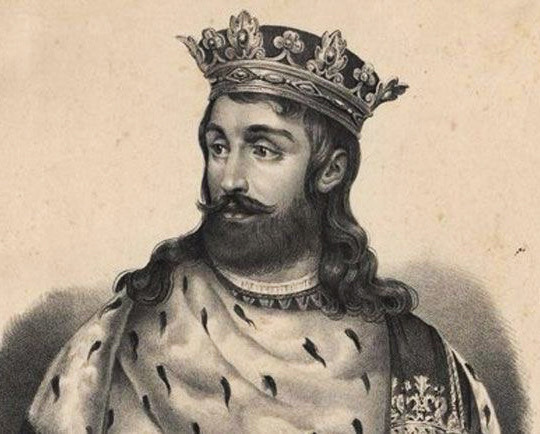
1) Pedro I of of Portugal, certainly, one if the most renowned portuguese monarchs, largely due to the saga of “love and passion” with Inês de Castro. Yet, it was common knowledge that she wasn't the Pedro’s only love: he harboured a passion for his squire, Afonso Moreira, a relationship that ended as disastrously as his other romantic (or not) entanglements. On one fateful occasion, Afonso was caught in bed with Catarina Tosse, wife of Lourenço Gonçalves, who was an esteemed magistrate.
Throughout his reign, Pedro earned the epithet “the Cruel” for his ruthless administration of justice, whereby transgressions of any magnitude often resulted in swift execution. Pedro’s decision to order Afonso’s castration as punishment for his adultery starkly manifested his merciless ethos. Nevertheless, according to Fernão Lopes, a chronicler of portuguese court at the time, in chapter VIII of “Crônica de el-rei D. Pedro I”, his harshness stemmed from a surge of jealousy on the king’s part upon discovering his beloved squire’s relationship with a woman.
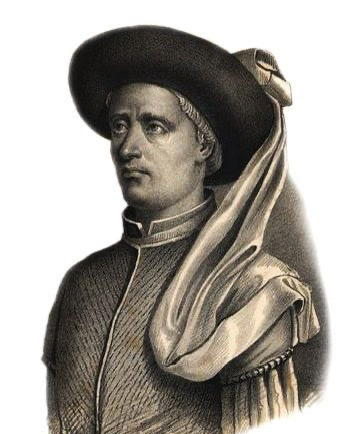
2) Prince Henry, revered as “the Navigator”, occupies a central role particularly during the epoch of maritime exploration.
He was hailed as “chaste prince”, having never entered into wedlock, with no historical accounts suggesting (with certainty) any relationships with women. In the annals of 1444, Henry experienced the loss of a “dear friend” in Ceuta, a tragedy that pluged him into 3 months of profound mourning. Both his father, King John I, and his brother, King Edward, counselled him to “rein in his emotions, lest he indulge men beyond what virtue dictates.”
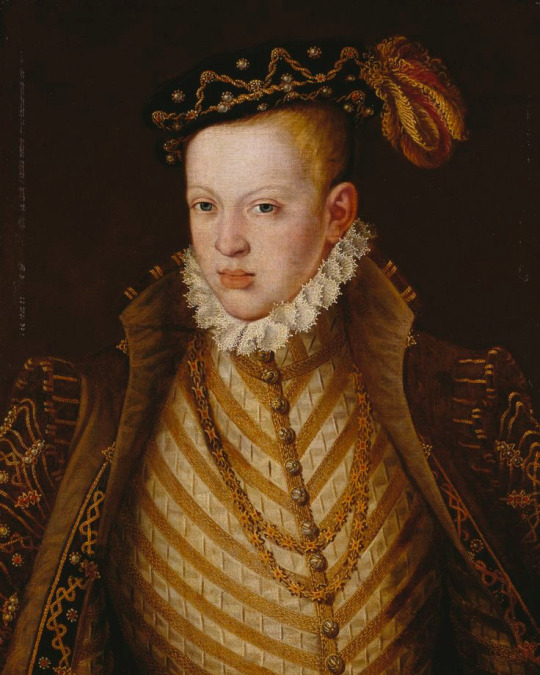
3) King Sebastian contracted gonorrhoea at the age 10/11, a malady documented in medical records at the time that rendered him sexually impotent. Some historians posit that this affliction may have dissuaded Sebastian from pursuing matrimonial unions or romantic relationships with women.
Even though, the “Crônicas de el-rei D. Sebastião” by Friar Bernardo da Cruz recounts an incident during a hunt in the Alentejo, where the entourage of nobles accompanying King Sebastian were stirred by a commotion. Investigating the disturbance, they stumbled upon the monarch locked in an embrance with a fugitive slave amidst the woodland.

4) King Afonso VI, sibling to Queen Catarina of Braganza, earned a reputation for rebeliouness and unruliness from a tender age, yet he harboured no ambitions for kingship.
His reign , marred by a series of missteps, was etched in history for its futile ventures. Despite grappling with severe health afflictions — such as partial paralysis stemming from hemiplegic fever, and scourge of bulimia — Afonso found solace in nocturnal escapades with his inner circle of friends. Among them was António Conti, an intalian peddler of opulent attire and accoutrements to Europe’s nobility. Conti’s sway in Afonso’s court burgeoned as he assumed the role of sartorial advisor and facilitator of introductions to foreign luminaries. Also, both grew increasingly closer to esch other, with Afonso avoiding royal gatherings to spend time with Conti, mostly in his chambers.
In 1666, Afonso took the hand of Maria Francisca Isabel of Savoy, yet their union was fleeting. Maria, citing non-consummation owing to Afonso’s hemiplegia, sought an annulment. In letters to his sister, he bemoaned Maria’s coercive measures, by which she compelled him into relationships with 14 courtesants in a bid to unearth the root of their marital discord.
Seeking to shield Afonso’s sovereignty and secure the portuguese lineage, Luisa de Gusmão, his mother, sanctioned the arrest and subsequent exile of Conti to the distant shores of Brazil.
#i am sorry for how long it is#but i really wanted to post it#so there you have#theres other monarchs to talk about#but these are the ones with the most evidences#pedro i of portugal#prince henry#king sebastian#afonso vi of portugal#historical facts#portugal
13 notes
·
View notes
Text

Entrée du "Pavillon Vendôme" construit pour Jean Delaunay (circa 1670), ayant appartenu ensuite à Françoise Moreau, maîtresse de Philippe de Vendôme qui commanda des embellissements sous la direction de l'architecte Jules Hardouin-Mansart (1699), puis vendu en 1720 à Louis Armand de Bourbon, Prince de Conti (1720), à Clichy, février 2024.
8 notes
·
View notes
Photo

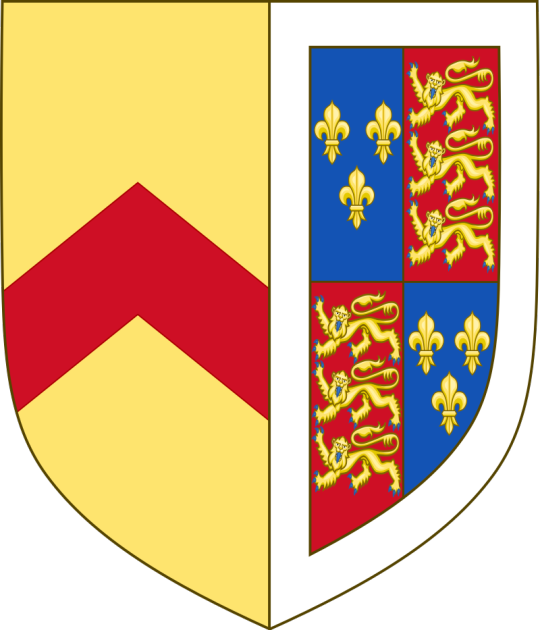

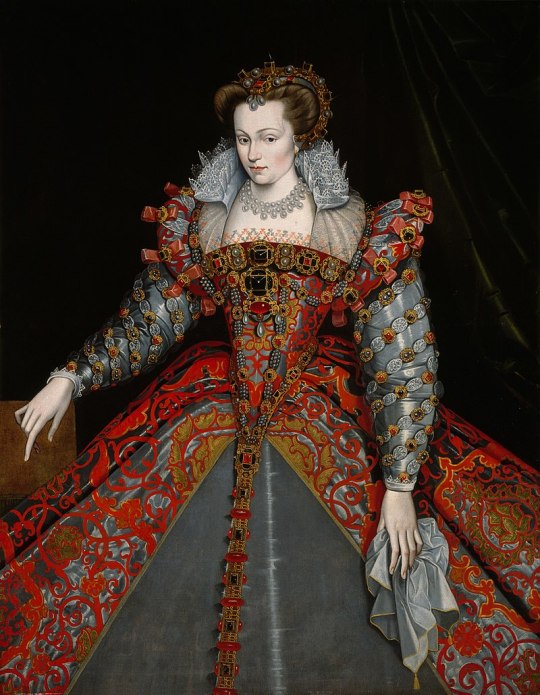
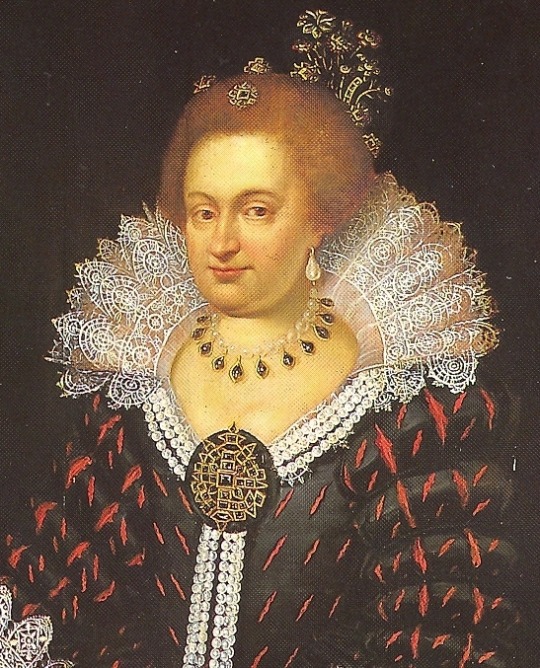

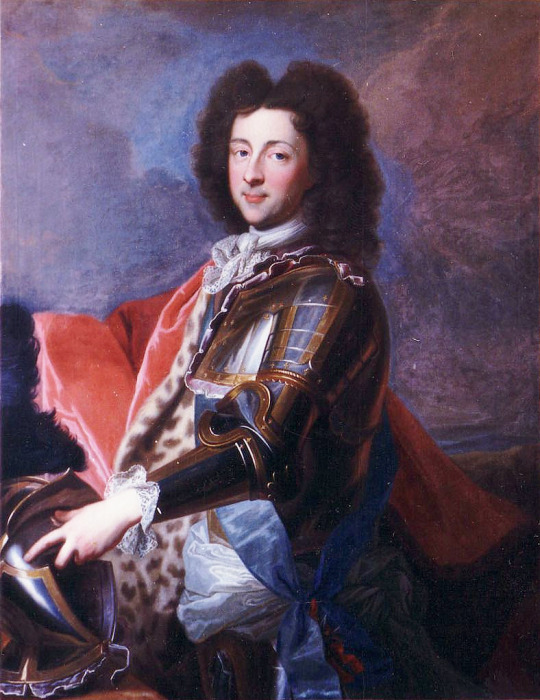
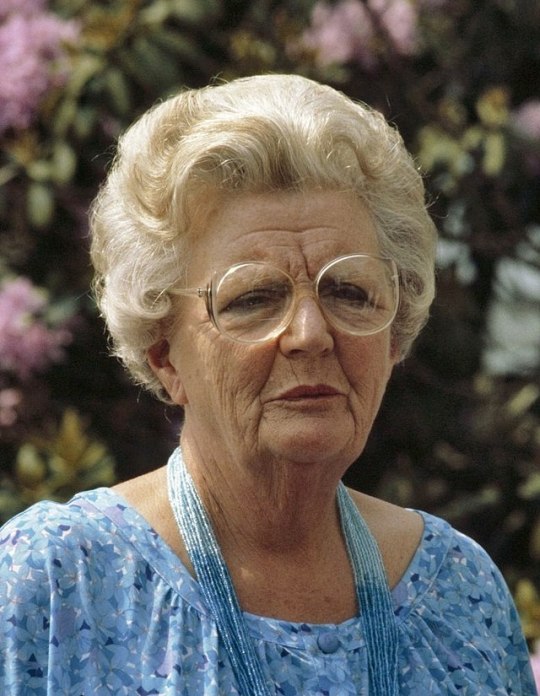


Royal Birthdays for today, April 30th:
Casimir III, King of Poland, 1310
Anne of Gloucester, Countess of Stafford, 1383
William III, Landgrave of Thuringia, 1425
Louise of Lorraine, Queen of France, 1553
Éléonore de Bourbon, Princess of Orange, 1587
Mary II, Queen of England, 1662
François Louis, Prince of Conti, 1664
Juliana, Queen of the Netherlands, 1909
Carl XVI Gustaf, King of Sweden, 1946
Miguel Urdangarín y de Borbón, Son of Infanta Cristina, 2002
#mary ii#louise of lorraine#casimir iii#Éléonore de Bourbon#william iii#anne of gloucester#francois louis de bourbon#queen juliana#carl xvi gustaf#Miguel Urdangarín y de Borbón#long live the queue#royal birthdays
21 notes
·
View notes
Text
Talk to me if you are interested in:
Napoleon and Napoleon II
Rousseau
Charles II of England and his sons
Louis XIII/XVI/XV/XVI (yesss ALL of them)
Philippe I Duc d'Orleans
Marquis de Sade
Peter the Great
Louis Ferdinand, Dauphin
Lord Byron
Literally any of the castrati though my fav are Farinelli, Caffarelli, Matteuccio, Pacchierotti, Tenducci and Guadagni
Casanova (his memoirs are awesome)
John Wilmot (the naughtiest Earl of Rochester)
The Rhine princes (Charles Louis, Rupert, Edward, Maurice)
Louis Auguste (duke of Maine)
Henry Benedict Stuart
Henry Stuart, Duke of Gloucester
Louis Jean Marie de Bourbon, duc de Penthièvre
Charles Townshend, 2nd Viscount Townshend
François Louis, Prince of Conti
Louis Henri of Bourbon
Philippe, Duke of Vendôme
Louis, Duke of Orléans
Philippe, Chevalier de Lorraine
Carlo II Gonzaga Nevers
And thus concludes my subject-to-alteration list of dead men I'd like to discuss. Have a nice day/night! 🌈
#napoleon#rousseau#marquis de sade#louis xvi#louis xv#junot#louis xiv#philippe i duc d'orleans#louis xiii#christian vii#lord byron#peter the great#napoleon ii#Farinelli#Castrati#caffarelli#Pacchierotti#Guadagni#tenducci#casanova#giacomo casanova#charles ii of england#charles ii#matteuccio#john wilmot
16 notes
·
View notes
Text
THIS DAY IN GAY HISTORY
based on: The White Crane Institute's 'Gay Wisdom', Gay Birthdays, Gay For Today, Famous GLBT, glbt-Gay Encylopedia, Today in Gay History, Wikipedia, and more


1644 – The Abbé de Choisy, also known as François Timoléon (d.1724), born in Paris, among the notable Frenchmen of the seventeenth century, has left for posterity a vivid firsthand description of a strong cross-gender wish. During his infancy and early youth, his mother had attired him completely as a girl. At eighteen this practice continued and his waist was then "encircled with tight-fitting corsets which made his loins, hips, and bust more prominent." As an adult, for five months he played comedy as a girl and reported: "Everybody was deceived; I had [male] lovers to whom I granted small favors."

de Choisy as a woman
In 1676, he attended the Papal inaugural ball in a female attire. In 1687, he was received into the Académie de France. In 1696 he became the Ambassador of Louis XIV to Siam.
Regarding his gender identity he wrote,
I thought myself really and truly a woman. I have tried to find out how such a strange pleasure came to me, and I take it to be in this way. It is an attribute of God to be loved and adored, and man - so far as his weak nature will permit - has the same ambition, and it is beauty which creates love, and beauty is generally woman's portion … . I have heard someone near me whisper, "There is a pretty woman," I have felt a pleasure so great that it is beyond all comparison. Ambition, riches, even love cannot equal it …
In 1676, he attended the Papal inaugural ball in a female attire. In 1687, he was received into the Académie de France. In 1696 he became the Ambassador of Louis XIV to Siam.
Regarding his gender identity he wrote,
I thought myself really and truly a woman. I have tried to find out how such a strange pleasure came to me, and I take it to be in this way. It is an attribute of God to be loved and adored, and man - so far as his weak nature will permit - has the same ambition, and it is beauty which creates love, and beauty is generally woman's portion … . I have heard someone near me whisper, "There is a pretty woman," I have felt a pleasure so great that it is beyond all comparison. Ambition, riches, even love cannot equal it …


1667 – Louis de Bourbon, Légitimé de France, Count of Vermandois (d.1683) was the eldest surviving son of Louis XIV of France and his mistress Louise de La Vallière. He was sometimes known as Louis de Vermandois after his title. He died unmarried and without issue.
Louis de Bourbon was born at the Château de Saint-Germain-en-Laye. He was named after his father. Like his elder sister, Marie Anne de Bourbon, who was known at court as Mademoiselle de Blois, he was given the surname of de Bourbon not de France as a result of his illegitimacy. As a child, he called his mother Belle Maman because of her beauty. Louis was legitimised in 1669, at the age of two, and was given the title of comte de Vermandois and was made an Admiral of France.
In 1674, his mother entered a Carmelite convent in Paris, and took the name Sœur Louise de la Miséricorde. Afterwards, they saw very little of each other. From his mother and his father, Louis had five full siblings, many of whom died before his birth.
After his mother left, Louis lived at the Palais Royal in Paris with his uncle, Philippe of France, duc d'Orléans, and his wife Elizabeth Charlotte of the Palatinate. At the Palais-Royal, he became very close to his aunt despite her well-known dislike of Louis XIV's bastards. The affection the aunt and nephew had for each other never diminished.
While he was at the court of his libertine and homosexual uncle, he met the Chevalier de Lorraine, his uncle's most famous lover. It is said that the young count was seduced by the older chevalier and his set (including the Prince of Conti) and began practicing le vice italien (the contemporary appellation for homosexuality).
Louis XIV decided to exile his son and the Chevalier de Lorraine.
In order to cover up the scandal, it was suggested that the boy be married off as soon as possible; a bride suggested was Anne Louise Bénédicte de Bourbon; Louis was exiled before anything could materialise.
In June 1682, Louis was exiled to Normandy. In order to smooth things over between father and son, his aunt Elizabeth Charlotte of the Palatinate suggested to the king that Louis be sent as a soldier to Flanders, which was then under French occupation. The king agreed with the suggestion and his son was sent to the Siege of Courtray. It was there that Louis fell ill.
Despite his illness, Louis was desperate to regain his father's love and continued to fight in battle regardless of advice given by the royal doctor and the marquis de Montchevreuil that he return to Lille in order to recuperate.
Louis died on 18 November 1683, at the age of sixteen. He was buried at the cathedral at Arras. His loving sister and aunt were greatly impacted by his death. His father, however, did not even shed a tear. His mother, still obsessed with the sin of her previous affair with the king, said upon hearing of her son's death: I ought to weep for his birth far more than his death.
Louis was later suspected of being the Man in the Iron Mask.


Gandhi and Kallenbach
1869 – Mohandras Mahatma Gandhi was an Indian lawyer, anti-colonial nationalist, and political ethicist, who employed nonviolent resistance (satyagraha) to lead the successful campaign for India's independence from British rule, and in turn inspired movements for civil rights and freedom across the world. The honorific Mahatma ("great-souled", "venerable"), first applied to him in 1914 in South Africa, is now used throughout the world.
Born and raised in a Hindu family in coastal Gujarat, western India, Gandhi trained in law at the Inner Temple, London, and was called to the bar at age 22 in June 1891. After two uncertain years in India, where he was unable to start a successful law practice, he moved to South Africa in 1893 to represent an Indian merchant in a lawsuit. He went on to stay for 21 years.
It was in South Africa that Gandhi raised a family, and first employed nonviolent resistance in a campaign for civil rights. In 1915, aged 45, he returned to India. He set about organising peasants, farmers, and urban laborers to protest against excessive land-tax and discrimination. Assuming leadership of the Indian National Congress in 1921, Gandhi led nationwide campaigns for easing poverty, expanding women's rights, building religious and ethnic amity, ending untouchability, and above all for achieving Swaraj or self-rule.
Was Mahatma Gandhi gay? A Pulitzer-Prize winning author Joseph Lelyveld claims the god-like Indian figure not only left his wife for a man, but also harbored racist attitudes.
According to Lelyveld, his lover was Hermann Kallenbach, a German-Jewish architect and bodybuilder. The couple built their love nest during Gandhi's time in South Africa where he arrived as a 23-year-old law clerk in 1893 and lived for 21 years.
At the age of 13 Gandhi had been married to 14-year-old Kasturbai Makhanji, but after four children together they broke up so he could be with Kallenbach. As late as 1933 Gandhi wrote a letter telling of his unending desire and branding his ex-wife "the most venomous woman I have met." Kallenabach emigrated from East Prussia to South Africa where he first met Gandhi. The author describes Gandhi's relationship with the man as, "the most intimate, also ambiguous relationship of [Gandhi's] lifetime."
Much of the intimacy between the two is revealed in Kallenbach's letters to his Indian friend after Gandhi left his wifen 'Ba' — an arranged marriage — in 1908 for Kallenbach, a lifelong bachelor, according to the book.
The source of much of the detail of their affair was found in the "loving and charming love notes" that Gandhi wrote to Kallenbach, whose family saved them after the architect's death. They eventually landed in the National Archives of India. Gandhi had destroyed all those from Kallenbach.
It was known that Gandhi was preoccupied with physiology, and even though he had a "taut torso," weighing 106 to 118 pounds throughout his life, the author says Gandhi was attracted to Kallenbach's strongman build.
In letters, Gandhi wrote to Kallenbach, "How completely you have taken possession of my body. This is slavery with a vengeance."
"Your portrait (the only one) stands on my mantelpiece in the bedroom," he writes. "The mantelpiece is opposite the bed."
The pair lived together for two years in a house Kallenbach built in South Africa and pledged to give one another "more love, and yet more love."
Gandhi implored Kallenbach not to "look lustfully upon any woman" and cautioned, "I cannot imagine a thing as ugly as the intercourse of men and women."
By the time Gandhi left South Africa in 1914, Kallenbach was not allowed to accompany him because of World War I. But Gandhi told him, "You will always be you and you alone to me…I have told you you will have to desert me and not I you."
Kallenbach died in 1945 and Gandhi was assassinated in 1948


1985 - Rock Hudson, American actor died (b.1925); Hudson's death from HIV/AIDS changed the face of AIDS in the United States.


1997 – "Variety" objected to the Motion Picture Association of America's decision to give the movie "Bent" an NC-17 rating, pointing out that the sex scenes were far less graphic than heterosexual sex scenes in movies which receive R ratings.


2 notes
·
View notes
Text
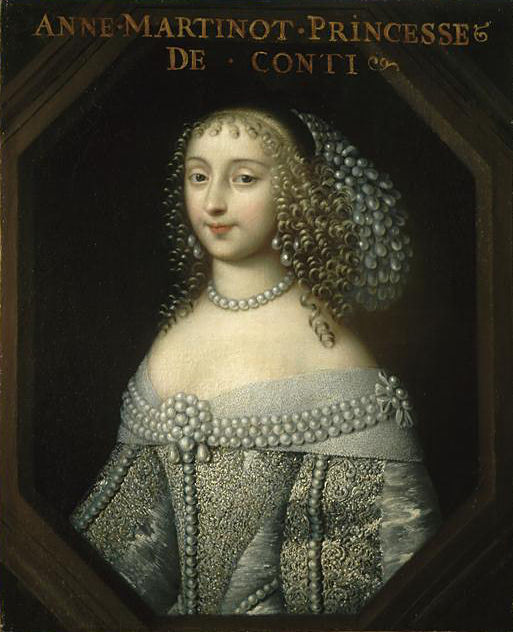
Anne Marie Martinozzi, Princess of Conti (1637 – 4 February 1672) was a French aristocrat and court official. She was a niece of King Louis XIV of France's chief minister Cardinal Mazarin, and the wife of Armand de Bourbon, Prince of Conti. She became the mother of the libertine François Louis, Prince of Conti, le Grand Conti. Her marriage to the Prince of Conti made her a princesse du Sang. She served as Surintendante de la Maison de la Reine for the queen dowager, Anne of Austria, between 1657 and 1666.
4 notes
·
View notes
Photo
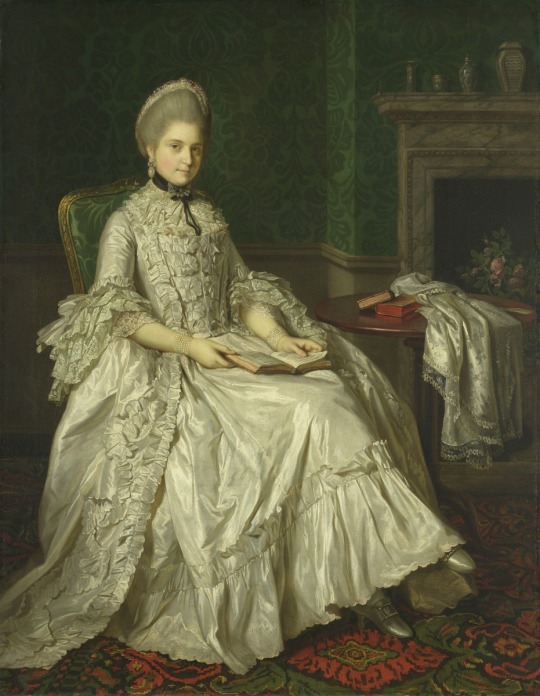

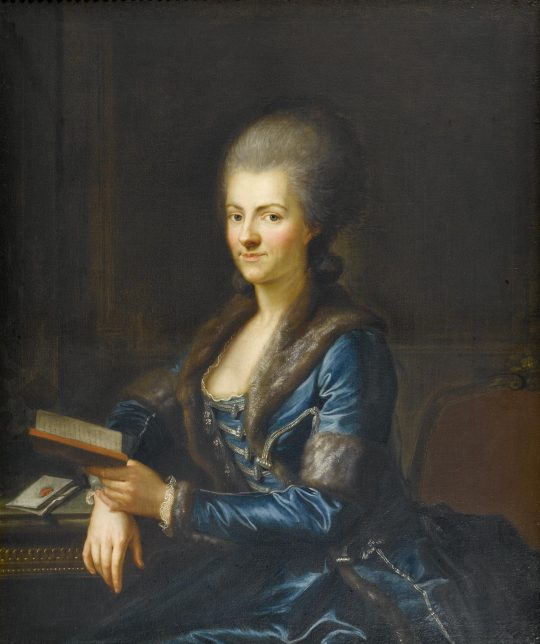

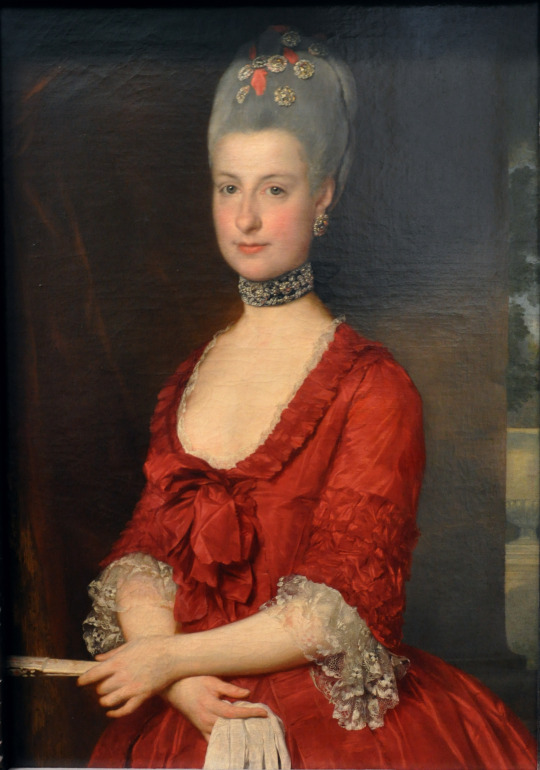

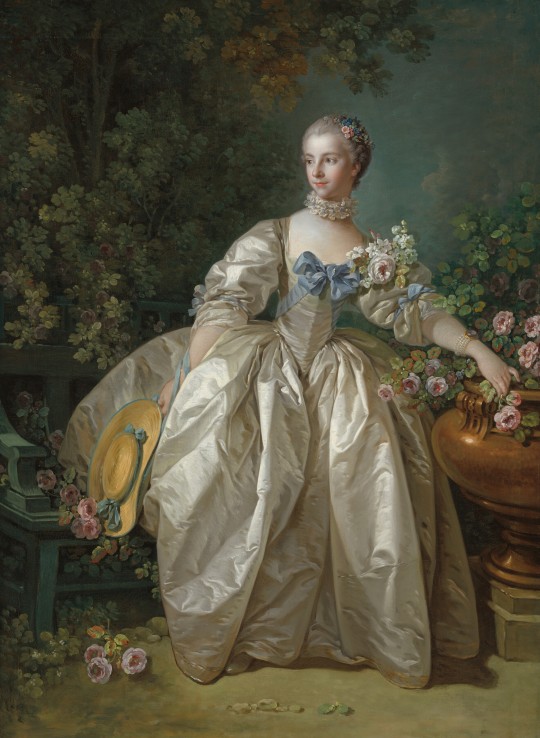


ca. 1766-1769 Maria Walpole, Duchess of Gloucester by ? (Virginia Museum of Fine Arts - Richmond, Virginia, USA). From history-of-fashion.tumblr.com/post/159078324404/ab-1766-1769-nathaniel-dance-holland-portrait 931X1200 @72 356kj.
1766 Comtesse Marie-Louise de Beaurepaire by Louis-Michel Van Loo (auctioned by Sotheby's). From their Web site; increased exposure 2167X2834 @150 7.6Mp.
From 1765 until 1766 Elisabeth Sulzer by Anton Graff (location ?). From Wikimedia via pinterest.com/SannaMaK/18th-century-fur-trim/ 1677X2000 @72 1Mj.
From 1765 until 1766 Elisabeth Sulzer by Anton Graff (location ?). From Wikimedia via pinterest.com/SannaMaK/18th-century-fur-trim/ 1677X2000 @72 1Mj.
ca. 1766 Mrs. Barnard Elliott, Jr. (Mary Elizabeth Bellinger Elliott) by Jeremiah Theus (Gibbes Museum of Art - Charleston, South Carolina, USA). From Wikimedia 2461X3001 @38pixels/cm 2.7Mj.
1766 Archduchess Maria Christina, Duchess of Teschen by Marcello Bacciarelli (Kunsthistorisches Museum - Wien, Austria). From Wikimedia 1828X2608 @300 1.3Mj.
1766 Annette, Comtesse de Vergennes in Oriental Costume by Antoine de Favray (private collection). From Google Art Project via Wikimedia 1974X2026 @97 3.5Mj.
1766 (?) Madame Bergeret by François Boucher (National Gallery of Art - Washington, DC, USA). From their Web site 2999X4096 #72 3.9Mj.
1766 Fête donnée par le prince de Conti au Prince héréditaire Charles Guillaume Ferdinand de Brunswick-Lunebourg by Michel Barthélemy Ollivier entire scene (Châteaux de Versailles et de Trianon - Versailles, Île-de-France, France)1117X.840 @96 414kj.
1766 Fête donnée par le prince de Conti au Prince héréditaire Charles Guillaume Ferdinand de Brunswick-Lunebourg by Michel Barthélemy Ollivier right center (Châteaux de Versailles et de Trianon - Versailles, Île-de-France, France) 1137X.852 @96 261kj
#1766 fashion#Rococo fashion#Georgian fashion#Louis XV fashion#Maria Walpole#Marie-Louise de Beaurepaire#Louis-Michel Van Loo#Elisabeth Sulzer#Anton Graff#Jeremiah Theus#Archduchess Maria Christina#Marcello Bacciarelli#Comtesse de Vergennes#turquerie#orientalism#Antoine de Favray#Madame Bergeret#Michel Barthélemy Ollivier#picnic scene
19 notes
·
View notes
Text

CALENDRIER DE L'AVENT :
24 (ou peut-être plus) femmes utilisables comme personnages féminin dans de récits de cape et d'épée se déroulant sous le règne de Louis XIII.
4 - En 1620, elle pousse son fils, le jeune comte de Soisson, a entré en dissidence contre Louis XIII lors de la seconde guerre de la Mère et du Fils.
Sa mère se remaria avec le prince de Conty, le demi-frère du mari de Anne qui est Charles de Soissons.
3 notes
·
View notes
Photo

Louise Henriette de Bourbon (1726–1759), depicted as the goddess Hebe by Nattier.
She was the only daughter of Louis Armand de Bourbon, Prince of Conti and Louise Élisabeth de Bourbon.
Her mother was the oldest and favourite daughter of Louise-Françoise de Bourbon, herself the oldest of the surviving legitimised daughters of Louis XIV and Madame de Montespan. As a member of the reigning House of Bourbon, Louise Henriette was a Princess of the Blood (princesse du sang). In her youth she was known at court as Mademoiselle de Conti.
#jean marc nattier#royaume de france#maison de bourbon#bourbon orleans#maison d'orléans#maison d'orleans#bourbon conti#mademoiselle de conti#princesse du sang
43 notes
·
View notes
Text
She "does nothing that is not delightful": Marquise Du Parc.
The next candidate for stardom was also a widow, although somewhat merrier. Marquise-Thérèse Gorla, known as Mlle Du Parc, was the opposite of Mlle Des Œillets: she was a less accomplished actress, but beautiful and notorious because of her relationship with Racine. References to her by the gazetteers almost always stress her height and her beauty and her ability as a dancer; she was the grande et belle Mlle Du Parc. Recent scholarship has also made much of her. For instance, in his earliest account of seventeenth-century actors, Les Grands Comédiens du XVIIe siècle, Georges Mongrédien includes biographies of nine actors and one actress: Marquise Du Parc.
[..]
The glimpses we get of Mlle Du Parc over the next few years all testify to her attractiveness to men. When Daniel de Cosnac, for isntance, describes the competition between the Molière-Béjart troupe and the troupe of Cormier to become the prince de Conti's resident company in Pézenas in 1653, he notes that the prince's secretary, Sarasin, favored the Molière-Béjart troupe because he had fallen in love with Mlle Du Parc. And both Pierre Corneille and his younger brother Thomas wrote love poetry to her, although, as Georges Forestier notes, it would be injudicious to assume, as some have, that they were in love with her. To do so would be to
"ignore all the poetic tradition: for Corneille, Marquise was the pretext for a long-distance joust with the great Ronsard on the theme of fugitive beauty and immortality, of the revenge of the aging poet… Thomas Corneille also wrote some verses to her, as if the two brothers were engaged in a little poetic tournament with Marquise as their inspiration."
Molière wrote a verse to her as well, very conventional, remarking on her beautiful complexion, her admirable figure, even her wit. Part of the Molière roman is the belief that he was in love with her or slept with all three of the actresses in the provincial troupe: Madeleine, Marquise, and Catherine de Brie. In fact, there is no hard evidence that he was the lover of either Mlle de Brie or Mlle Du Parc, both of whom appear to have been content with their husbands. André Chagny, in his biography of Mlle Du Parc, concludes that her private life was perfectly correct until after her husband died. And, besides, she was very often pregnant. She had at least five children, three of whom were living at the time of Du Parc's death in 1664.

Sorting out what roles Molière may have written for Mlle Du Parc is not easy, but it does not appear that he featured her or thought of her as a star. We are reasonably sure that none of his major ingenue roles were written for her; those usually went to Mlle de Brie and, later, to Mlle Molière [..]
It was when Molière introduced his comedy-ballets that someone like Marquise Du Parc would have been invaluable. The first of these plays with music was Les Fâcheux, written for Nicolas Fouquet's ill-fated fête at Vaux-le-Vicomte on August 17, 1661 [..] However, even though ballet interludes were normally performed by hired professionals and not by members of the troupe, in this instance Loret writes about:
La Du Parc, that beautiful actress,
With the bearing of an Empress,
Who, whether singing or dancing,
Does nothing that is not delightful.
[..]
Molière found other opportunities to capitalize on the legs, the beauty and the presence of Mlle Du Parc, especially during the famous Plaisirs de L'Ile Enchantée, Louis XIV's 1664 entertainement at Versailles. On the first day she represented "Spring", dressed in green embroidered with silver and multi-colored flowers, and spoke a tribute to the queen Marie-Thérèse..
Virginia Scott- Women on the Stage in Early Modern France: 1540-1750.
#xvii#virginia scott#women on the stage in early modern france#marquise du parc#mademoiselle du parc#actresses#jean baptiste poquelin#molière#nicolas fouquet#louis xiv#marie thérèse d'autriche
8 notes
·
View notes
Photo

LES LUMIÈRES DE VERSAILLES #leslumièresdeversailles "(Les mauvaises manières du duc de Vendôme). Le duc de Parme eut à traiter avec M. de Vendôme : il lui envoya l'évêque de Parme, qui se trouva bien surpris d'être reçu par M. de Vendôme sur sa chaise percée, et plus encore de le voir se lever au milieu de la conférence, et se torcher le cul devant lui. Il en fut si indigné, que, toutefois sans mot dire, il s'en retourna à Parme sans finir ce qui l'avait amené, et déclara à son maitre qu'il n'y retournerait de sa vie après ce qui lui était arrivé." SAINT SIMON (Mémoires, tome 2 : 1701 1707) 1--LE GRAND PRIEUR DE VENDÔME PAR JEAN RAOUX (1721) Véritable artiste européen, Jean Raoux (1677-1734) unit sa connaissance de l’art nordique, plus particulièrement l'art hollandais, à ses expériences françaises et vénitiennes pour créer une synthèse artistique novatrice... Les grands amateurs du XVIIIe siècle, le duc de Choiseul, le prince de Conti, l’électeur palatin, duc de Schönborn, l’impératrice Catherine II de Russie et le roi Frédéric II de Prusse collectionnèrent ses œuvres. 2--UN PEU D'HISTOIRE MODERNE Le grand prieuré de France était un prieuré de l'ordre de Saint-Jean de Jérusalem. Il s'agissait du seul prieuré de la Langue de France avant la dévolution des biens de l'ordre du Temple. L’ordre de Saint-Jean de Jérusalem, appelé aussi ordre des Hospitaliers, est un ordre religieux catholique hospitalier et militaire qui a existé de l'époque des croisades. Il est généralement connu, aujourd'hui sous le nom de l'ordre de Malte. 3--UNE MUSIQUE D'UN BONHEUR CONTAGIEUX Zelenka Requiem ZWV 46 Collegium 1704 Václav Luks https://youtu.be/4Sg01NHNm7M Le travail de Zelenka se caractérise par une utilisation avancée du contrepoint, des exigences extrêmes sur les techniques de jeu et de chant et par une grande ingéniosité et richesse d'imagination. Il est comparé aux plus grands compositeurs de sa génération, tels que Jean-Sebastian Bach. Zelenka est parfois appelée « l'homologue catholique de Bach ». https://www.facebook.com/groups/716146568740323/?ref=share_group_link https://www.instagram.com/p/ClyAmrTsT_F/?igshid=NGJjMDIxMWI=
3 notes
·
View notes
Photo

Armand de Bourbon, prince de Conti. . Credit line: Harris Brisbane Dick Fund, 1953 https://www.metmuseum.org/art/collection/search/393209
#aesthetic#art#abstract art#art museum#art history#The Metropolitan Museum of Art#museum#museum photography#museum aesthetic#dark academia
1 note
·
View note
Text



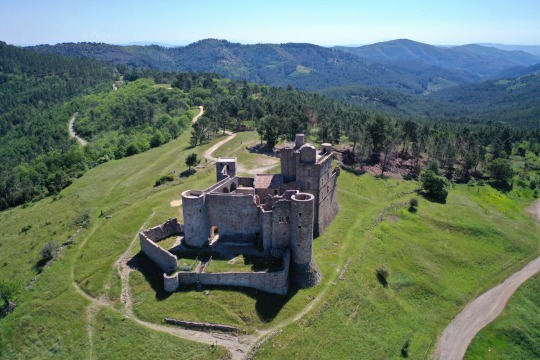






Château de Portes
Surnommé le Vaisseau des Cévennes en raison de sa proue en pierre spectaculaire et unique en Europe, le Château de Portes, classé Monument Historique, et son col surveille l'ancien chemin dit Régordane qu'empruntaient les croisés vers la terre sainte. Porte d'entrée vers les hautes Cévennes, il se situe en bordure du Parc des Cévennes et défie plus de 10 siècles d'histoire.
Sur la chemin de Régordane, pèlerinage d'Orléans à Saint Gilles (aujourd'hui GR 700), Portes surveillait le passage des Cévennes sur 10 lieues.
Le château, classé Monument Historique, se dresse fièrement sur son col et domine les vallées du sud du Mont Lozère.
Point de passage obligé, il surveille tout au long du Moyen Age, la route des croisés partis pour la Terre Sainte. La seigneurie devient de plus en plus puissante jusqu'à ce que Louis XIII érige Portes en Marquisat en faveur d'Antoine Hercule de Budos Vice Amiral de France. Sa fille Marie-Félice, laisse le château en héritage à son neveu le Prince de Conti en 1693 que son descendant vend à Louis XVI en 1781.
Le Château Neuf, haut et énigmatique bâtiment de plan triangulaire, unique en Europe, adossé à la forteresse médiévale et construit en grand appareillage de grès doré sur la base d'un plan triangulaire très effilé lui a valu le surnom de Vaisseau des Cévennes.
Ce bâtiment qui célèbre le mariage du Moyen Age et de la Renaissance était habité jusqu'au début du XXe siècle avant que les mines de charbon ne changent le destin du village.
Les visiteurs peuvent découvrir l'enceinte polygonale cantonnée de deux tours rondes et d'une tour carrée élevés du XIe au XVIe siècles et le "Château Neuf"composé de trois étages d'habitation et des cuisines. Une plateforme à 32 mètres d'élévation offre une vue circulaire sur les vallées environnantes. De nombreux meubles et objets du quotidien vous plongent dans le passé du monument.
Des artistes cévenoles exposent chaque été leurs œuvres. Des animations ludiques sont également proposées régulièrement l
Ouvert les samedis et dimanches du 1er mai au 30 juin (10h - 18h)
Ouvert tous les jours sauf le lundi du 1er juillet au 31 août (10h - 18h)
http://www.cevennes-tourisme.fr/portes/chateau-de-portes/tabid/2678/offreid/261f0b5f-fde3-4ba8-84d5-137b5430d0fa
#original photographers#photography#photographers on tumblr#photographe#photo#france#villagedefrance#tourism#francephotography#occitanie#tourisme#ancient village#monument#chateau#cevennes#patrimoine
3 notes
·
View notes